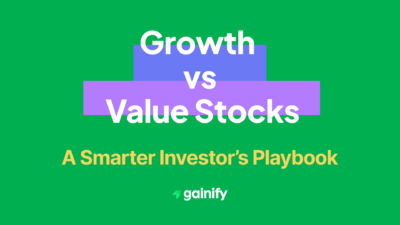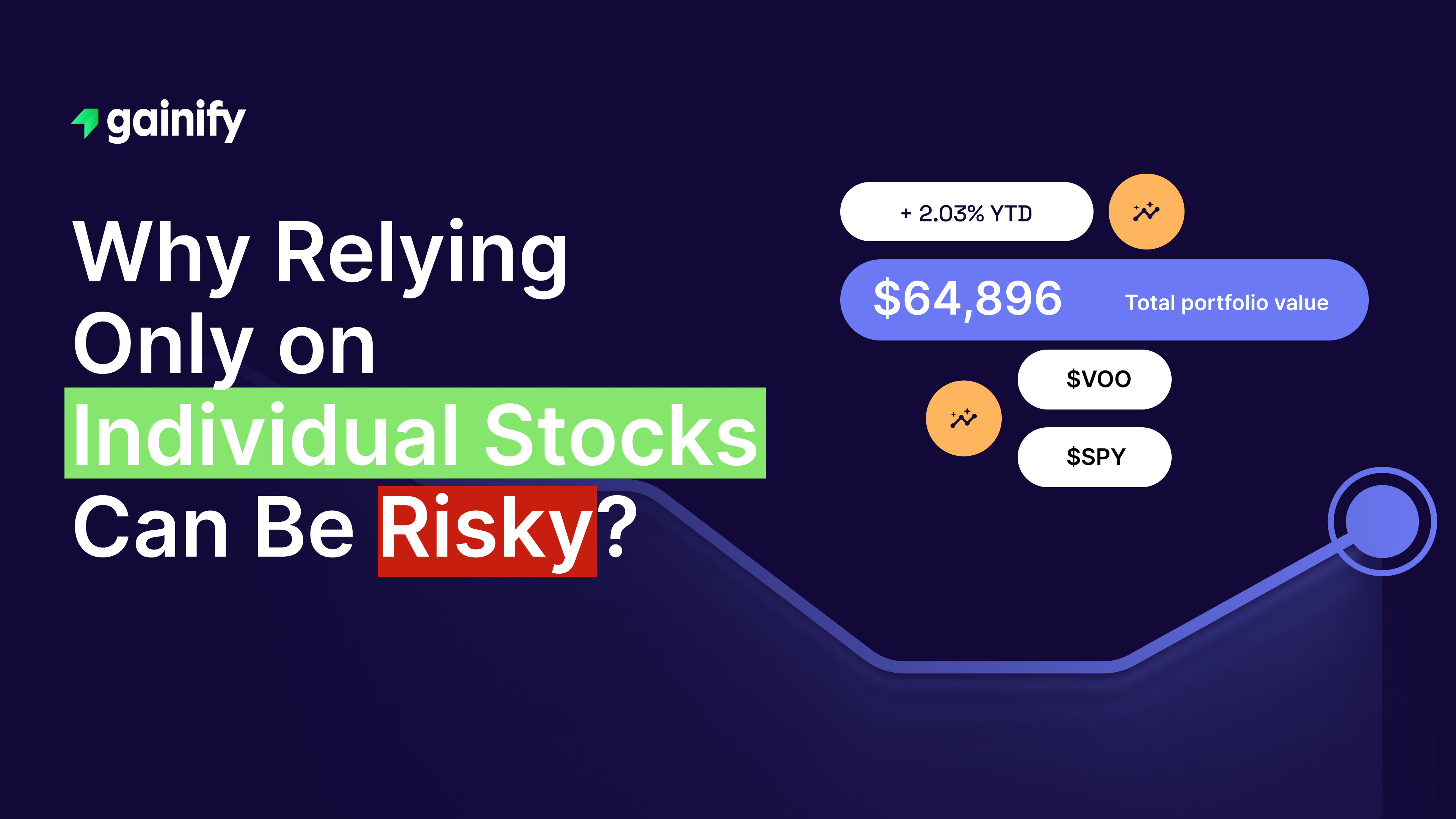Forget what you think you know about trusts. For too long, the very word “trust” conjured images of sprawling estates, offshore accounts, and a financial world accessible only to the one percent. This outdated perception has kept countless savvy investors from unlocking one of the most powerful tools for multi-generational wealth creation and protection. In reality, the modern landscape of finance has democratized these structures, making trust Investing an indispensable strategy for anyone serious about building a legacy that transcends their lifetime. It’s not about avoiding taxes; it’s about imbuing your capital with intention and control, ensuring your vision for your wealth continues to guide it, no matter what tomorrow brings.
Ultimately, trust investing is about more than just making money. It’s a smart way to turn your wealth into something that lasts and makes a real difference. Whether your main goal is to pay for your grandchildren’s education, protect your loved ones, or support a charity for years to come, a trust helps your plans succeed.
When your money has a clear purpose, a plan for the future, and strong rules for how it’s managed, it stops being just numbers in an account. It starts growing with real meaning, working hard to achieve your long-term goals. You don’t need to be super rich to get these benefits. What you really need is a clear idea of what you want your wealth to achieve, a vision for your legacy, and the decision to set up your money so it follows your principles, even when you’re no longer around. For anyone who wants their financial plans to last and make a true impact, trust investing isn’t just a good idea; it’s a vital part of managing your wealth.
What is Trust Investing, Really? Beyond the Paperwork
At its heart, a trust fund is a legal plan where one person or group (the trustee) holds and manages assets for another person or group (the beneficiary). They follow exact instructions given by the person who set up the trust (the grantor) in the trust documents. This basic legal setup is usually the first step in a complete estate planning strategy. However, when we talk about “trust investing”, we’re not just talking about the legal paperwork. Instead, we’re diving into a smart and active financial strategy for how that money will be managed and grown over time.
Trust investing means you purposely and carefully put your assets inside a trust. You can also think of this as a special kind of investment trust. The main goal is to grow wealth over the long term, reach specific goals, and manage risks over many years – often for several generations. This careful approach is different from simply putting money into a regular investment account or a broad mutual fund. While a mutual fund brings together money from many investors to buy stocks and bonds, a trust creates the rules for owning and managing those investments in a very specific way.
The kinds of assets you can hold in trust accounts for investing are very wide-ranging. This includes many types of investment, from safer choices like diversified index funds and stable bonds, to real property, stocks that pay dividends, and even more complex investments. These could be private company shares, venture capital, or even special items like digital currencies or valuable collectibles. While a standard investment account can be used for a wide range of personal financial strategies, a trust’s investments are precisely aligned with the grantor’s clear, enduring aspirations, often extending far into the future.
The most important thing about trust investing isn’t just what assets are held. It’s the main reason behind the investment and the built-in rules. Unlike casual stock market trading, where people might buy risky stocks based on how the market feels that day, investments within a trust are carefully connected to life goals, strong values (like those for a charitable trust), and often, specific legal duties or future needs of the beneficiaries. The investment process within a trust is usually very organized, often guided by a written plan. The portfolio manager who handles the trust’s investments must act with great honesty and care (this is called a “fiduciary duty”), making sure decisions match the trust’s purpose and follow the prudent investor rule, which means investing wisely and carefully.
When done well, this structured approach helps your money work with amazing consistency and a clear purpose, even when you’re not there to guide it. It’s about building a financial legacy that can adjust to changing economic times, from ups and downs in market prices to global events, all while staying true to your original vision.
Key Takeaway: Trust investing doesn’t automatically perform better just by picking great assets, nor is it simply another type of investment company. Its real strength is that it’s built to last longer than typical investments. It provides lasting stability, strong rules, and a precise way to meet long-term goals, often over many generations.
How to Set Up a Trust
Setting up a trust involves several important steps, and it’s crucial to approach this process thoughtfully. It’s not a one-size-fits-all solution, and the details will depend on your specific goals and circumstances.
- Define Your Goals: Before anything else, clearly define why you want a trust. Are you looking to avoid probate, reduce estate taxes, provide for a special needs beneficiary, ensure responsible inheritance, or support a charity? Your goals will determine the type of trust you need.
- Choose the Right Type of Trust: There are many kinds of trusts, each with different features. Common types include:
- Revocable Living Trusts: These can be changed or canceled during your lifetime. They help avoid probate and maintain privacy.
- Irrevocable Trusts: These generally cannot be changed after they are created. They offer strong asset protection and potential estate tax benefits, but you give up control over the assets once they are in the trust.
- Charitable Trusts: Designed to benefit a specific charity or causes.
- Special Needs Trusts: Created to provide for a disabled beneficiary without affecting their government benefits.
- Select Your Trustee: The trustee is the person or entity responsible for managing the trust’s assets and distributing them according to your instructions. This is a critical decision. A good trustee should be trustworthy, financially savvy, and willing to fulfill their fiduciary duty. You can choose an individual (like a family member), a professional trustee (such as a bank or trust company), or even yourself (for a revocable trust).
- Draft the Trust Documents: This is a complex legal step that requires the expertise of an estate planning attorney. They will draft the formal trust documents that outline your instructions, name the trustee and beneficiaries, specify how assets are to be managed and distributed, and address various contingencies.
- Fund the Trust: Once the trust is created, you must transfer assets into it. This is often overlooked but is absolutely essential. A trust has no power until it is “funded” with assets like bank accounts, investment portfolios, real estate, or business interests. Simply creating the document isn’t enough; the assets must be legally retitled in the name of the trust.
- Review and Update Regularly: Your life, laws, and financial circumstances will change. It’s important to review your trust periodically (e.g., every 3-5 years or after major life events like marriage, divorce, birth, or death) with your attorney and financial advisor to ensure it still aligns with your goals and is operating as intended. This ongoing trust administration is key to its effectiveness.
Why Every Investor Should Consider Trust Investing: It’s Not Just for the 1%
A persistent misconception is that trusts are exclusively for the ultra-rich. The reality has shifted dramatically. Middle-income families are increasingly leveraging living trusts and testamentary trusts to inject structure, protection, and foresight into their estate planning. Evolving tax codes and modernized trust laws have significantly lowered the barrier to entry, making trusts a more accessible and relevant tool for a wider demographic.
What makes a trust such a compelling financial instrument? It’s the profound capabilities it unlocks:
- Robust Governance: The ability to precisely dictate how assets are utilized, distributed, or reinvested even decades into the future ensuring your wishes are honored. This relates directly to trust administration and the trustee accountable to the grantor’s intent.
- Uninterrupted Continuity: Your meticulously crafted financial plan doesn’t dissolve upon your passing. A trust guarantees seamless, uninterrupted assets management through life’s major transitions: death, divorce, or incapacitation.
- Enhanced Asset Protection: Depending on the trust’s specific type and jurisdiction, assets held within may be shielded from potential lawsuits, creditors, or even imprudent financial decisions by future beneficiaries.
- Strategic Tax Efficiency: Trusts can be meticulously structured to manage income taxes, lower federal and state estate taxes, and handle capital gains, though this undeniably requires sophisticated, expert planning. This often involves careful consideration of tax-efficient investments.
- Mission-Driven Capital: Do you envision your assets exclusively supporting higher education, preserving a cherished family home, or advancing specific philanthropic values through a charitable trust? Trusts provide the mechanism to hard-code these visions directly into your capital, ensuring its deployment aligns with your deepest convictions.
Bottom Line: A trust is fundamentally not about merely sheltering taxes. It’s about empowering you to dictate how your capital behaves, ensuring it serves your terms and fulfills your enduring purpose.
Tax Optimization Benefits of Trusts
One of the most compelling reasons to consider a trust in the U.S. is its potential for significant tax optimization, especially in the context of estate planning. While tax laws are complex and always evolving, trusts offer various strategies to manage your wealth more tax-efficiently under federal and state regulations.
- Reducing Federal and State Estate Taxes: For individuals with larger estates, certain irrevocable trusts can remove assets from your taxable estate. This means those assets (and their future growth) won’t be subject to federal estate taxes (which have a high exemption, but can be substantial for very large estates) or potentially state estate taxes upon your death, saving your heirs a substantial amount. This is a key differentiator from revocable trusts, whose assets are generally still included in your taxable estate for federal purposes.
- Managing Capital Gains Tax: When highly appreciated assets (like stocks or real estate) are transferred into certain types of trusts, they might be sold by the trust with different capital gains tax implications. For example, a trust might realize gains, or it might be structured to pass gains through to beneficiaries who may be in a lower individual tax bracket. Understanding the “step-up in basis” rules, especially Revenue Ruling 2023-2 regarding irrevocable trusts, is crucial here, as it can impact whether beneficiaries inherit assets at the original cost or fair market value at death, affecting their future capital gains tax when they sell the assets.
- Income Tax Management: Trusts themselves are taxable entities, and their income tax brackets can be compressed, meaning they reach higher tax rates at lower income levels than individuals. However, a well-structured trust can optimize income tax by strategically distributing income to beneficiaries. If the beneficiaries are in a lower tax bracket than the trust, this can lead to an overall lower tax paid on the trust’s income. This strategic distribution, managed by the Trustee accountable to tax-efficient goals, ensures flexibility, particularly for non-grantor trusts.
- Charitable Giving Advantages: Charitable trusts (like Charitable Remainder Trusts or Charitable Lead Trusts) offer powerful tax incentives. When you donate appreciated assets to a charitable trust, you can receive an immediate income tax deduction, potentially avoid capital gains taxes on the asset’s sale by the trust, and often receive an income stream for a set period, with the remainder eventually going to charity. This creates a win-win for philanthropy and personal tax planning.
- Generation-Skipping Transfer (GST) Tax Planning: For very large estates, trusts can be designed to skip a generation (e.g., from grandparent to grandchild), potentially avoiding a layer of estate taxes that would apply if assets passed directly to children, though these are subject to a separate Generation-Skipping Transfer (GST) Tax exemption.
Important Note: Achieving these tax benefits requires expert planning. U.S. federal and state tax laws are intricate and frequently change. Always consult with a qualified estate planning attorney and tax advisor to ensure any trust strategy aligns with current laws and your individual financial situation.
The Critical Gaps: Misconceptions and Missed Opportunities in Trust Implementation
While the potential benefits of trusts are substantial, many investors inadvertently undermine their effectiveness. A common scenario involves clients having a lawyer draft boilerplate trust documents and then largely neglecting its ongoing strategic management. Equally problematic is funding a trust but leaving its investment strategy on autopilot. In both cases, the profound power of strategic trust investing remains untapped.
Common pitfalls that diminish a trust’s efficacy include:
- Absence of a Formal Investment Policy: If a trust doesn’t specify risk parameters, target returns, or specific investment goals, it can drift without direction, often leading to mediocrity.
- Suboptimal Trustee Selection: A truly effective trustee isn’t just someone you personally trust; it’s an individual or entity with a profound understanding of fiduciary duty, investment oversight, and the specific mandates of your trust. A prudent investor standard should guide their actions, ensuring they exercise reasonable care and adhere to an objective standard, avoiding a breach of duty or breach of trust.
- Short-Term Investment Horizon: Trusts are inherently long-term vehicles. If the asset allocation within a trust merely mirrors a personal brokerage account, it represents a significant missed opportunity for compounding and strategic growth.
Critical Perspective: Smart trust investors view their trust as a distinct financial entity, an “organism” with its own unique investment strategy meticulously tailored to its specific time horizon, beneficiary needs, and overarching mission. The portfolio manager should have a clear investment process aligned with these objectives.
Why Trust Investing Is More Crucial Than Ever in Today’s Climate
In today’s economy, with ongoing inflation, longer lifespans, and wealth moving faster between generations, the need for a strong financial structure is more important than ever.
Trust investing introduces a critical element that typical brokerage accounts and individual retirement accounts (IRAs) simply do not offer: rules-based purpose. While you can easily rebalance a personal portfolio at any time, you cannot effectively reconstruct a comprehensive financial philosophy or legacy strategy during a crisis.
Well-structured trusts provide:
- Enhanced Stability: A built-in buffer against volatile market swings and market prices, promoting long-term growth.
- Unambiguous Clarity: Streamlining complex generational transitions, minimizing disputes.
- Scalability for Growth: Adapting seamlessly as wealth accumulates and financial needs evolve, allowing for appreciation of capital and the management of revenue reserves.
- Enduring Longevity: Flexibility to reflect shifting family dynamics, beneficiary requirements, or philanthropic objectives over extended periods.
What’s more, trusts are incredibly flexible in today’s investment world. As new technologies like AI become more common, and as areas like private markets become more important, trusts can now hold and manage a much wider range of wealth. This means a trust can effectively control everything from shares in private companies to cryptocurrencies, as long as it’s set up correctly in the trust documents.
Points That Deserve a Second Look: The Downsides of Trust Investing
It’s imperative to offer a balanced perspective. While highly beneficial, trust investing is not a panacea, and the tool is only as effective as the underlying plan. Here’s what few advisors explicitly articulate:
- Reduced Agility: Irrevocable trust structures, by their very nature, can lock capital into place. If your life circumstances or financial goals undergo dramatic, unforeseen changes, unwinding or significantly modifying an irrevocable trust can be exceedingly difficult and costly, despite the trustee’s objective standard of care.
- Inherent Overhead Costs: Trusts carry ongoing expenses. Trustee fees, compliance filings, and legal maintenance costs, which often include hidden expense ratios, can slowly reduce smaller trust amounts. This might make them less practical for modest sums of money.
- Bad Setup Can Cause Problems: If your chosen trustee lacks the right investment skills, or if your instructions are unclear, the trust might not perform well. Worse, it could cause family disagreements.
Critical Caution: Trust investing should never be treated as just a legal task. It requires careful teamwork between legal, tax, and investment disciplines. This teamwork is vital and demands clear communication and understanding from the very beginning, moving beyond simple fund transfers to true assets management.
Essential Q&A on Trust Investing
- Q: Can I manage the investments within my own trust?
- A: Yes, if you are named as the trustee. A revocable trust typically grants the grantor significant control over trust accounts, whereas irrevocable trusts generally require a third-party trustee for independent management.
- Q: What types of assets can a trust hold?
- A: Virtually any asset – cash, publicly traded equities, ETFs, real estate, private business shares, intellectual property, and even tangible collectibles – as long as the asset aligns with the trust’s stated purpose and legal framework.
- Q: Is it possible to update a trust’s investment strategy over time?
- A: For a revocable trust, yes, modifications are generally straightforward. For irrevocable ones, the ability to update the investment strategy depends on the specific powers granted to the trustee and the inherent flexibility built into the original trust documents.
- Q: What is the recommended minimum capital for trust investing to be practical?
- A: While there isn’t a strict legal minimum, most financial and legal experts recommend at least $100,000 in assets to reasonably justify the initial setup, ongoing legal, and annual trustee costs associated with maintaining a trust.
- Q: Can trust investments inherently outperform traditional investment portfolios?
- A: Not inherently in terms of raw percentage returns on assets. However, they are designed to deliver more consistent, aligned, and significantly more protected outcomes over the long term, precisely due to their embedded governance structure, asset protection features, and potential tax efficiencies. Think of historical examples like the Foreign & Colonial Investment Trust, which demonstrated longevity and steady returns, or specialized UK Equity Income trusts.
The Profound Purpose of Trust Investing
Trust investing isn’t just about accumulating assets; it’s about actively shaping your financial legacy. It’s a strategic way to transform your wealth into an enduring force that makes a real difference. Whether your primary goal is to meticulously fund future generations’ education, reliably shield heirs from financial uncertainty, or firmly establish a lasting philanthropic endeavor, a trust acts as a powerful multiplier for your long-term strategy.
When your capital is guided by a clear mission, a defined timeline, and a strong governing structure, it moves beyond simple investment. Instead, it begins to compound with profound purpose, tirelessly working to fulfill your vision for the future.
You don’t need immense wealth to benefit from trust investing. What’s truly essential is clarity of purpose, a compelling vision for your legacy, and the commitment to design your wealth so it consistently serves your intentions, even when you’re no longer directly managing it.
If you are genuinely serious about achieving financial permanence and ensuring your wealth serves a meaningful purpose far beyond your lifetime, then trust investing may not be a mere option; it is, quite simply, an indispensable necessity.



